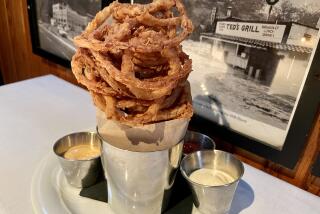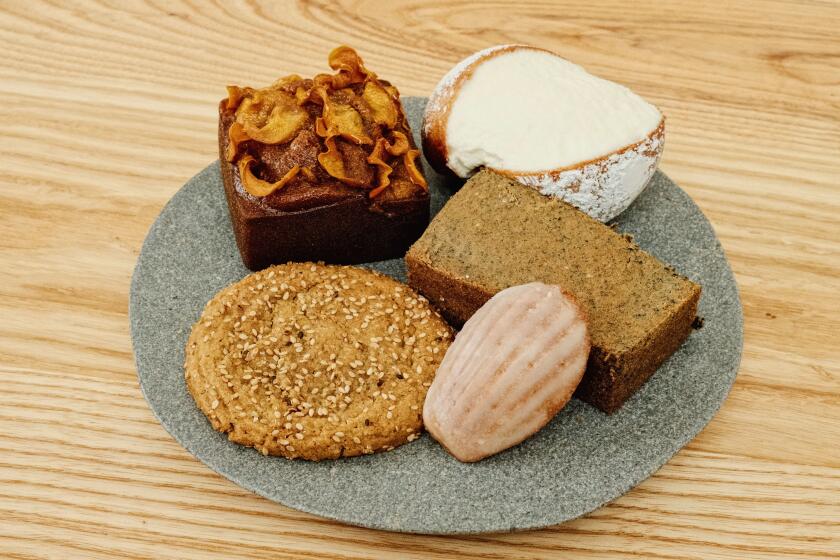This Vegetable Is Worth All the Tears
Onions have been around since prehistoric times and today are among the world’s leading vegetable crops. Like their garlic cousins, onions have been given credit for a lot of medical and health benefits, some of which fall into the general category of old wives’ tales and others of which may someday end up being substantiated by scientific research.
Nutritionally, onions are low in calories and in almost everything else, at least in the amounts normally consumed.
However, since flavor can be one of the first casualties when cooking without fat, adding onions can make a huge difference in how tasty a food is. Adding onions can actually encourage the consumption of very low fat dishes.
But it’s easy to sabotage onions by frying them in lots of butter or turning them into deep-fried onion rings, which can be pretty high in calories, about 60% of which come from the fat they are fried in.
Onions fall into two basic categories--dry onions and scallions (green onions). There are many varieties of dry onions, but basically they are divided up at harvest time into spring-summer onions and storage onions. The spring-summer onions grow primarily from April to August in warm states such as California, Texas, Georgia, Arizona and Hawaii. These onions have soft flesh and a mild, almost sweet taste. Summer onions are usually shipped right after harvesting, are very juicy and have enough sugar that they can be eaten raw. Some of the most famous varieties are the Maui, Vidalia and Walla-Walla onions, which have such a short period of availability that unless you live in one of those places (Hawaii, Georgia and Washington state, respectively), you may have to order the onions by mail.
*
Storage onions are grown in northern states like Idaho, Colorado and New York. They are harvested in late summer and early fall and then stored (or cured) for several months until they start to show up in markets in late fall and early spring. They have a thicker, darker, paper-like outer skin and firmer flesh, and they range in color from white to yellow to red. In stores they are usually designated just by the color of their skin. Storage onions are more pungent than the spring-summer varieties because of their lower water and sugar content.
It isn’t difficult to choose good onions. Look to make sure that the outer skin is dry and doesn’t have any green sunburn spots or blemishes. An onion should feel heavy for its size, be firm and compact and have no odor. If uncut onions have a strong aroma, it is a sign of internal bruising.
Storage onions will keep for four to five weeks in a cool, dry, well-ventilated place.
Spring-summer onions can be kept in the refrigerator for a week or two. Sprouting is one sure sign that an onion is over the hill.
Here are some tips for handling and cooking onions:
* To reduce the flow of tears that makes slicing onions such a chore, chill or freeze them first for 20 to 30 minutes. Another way to keep the tears away is to cut off the top, peel off the outer layers and leave the root end intact. The root end has the largest concentration of sulfuric compounds--and it’s the sulfur that makes you cry. (We have also found that peeling them under cold water also helps carry away the sulfur compounds before they reach your eyes.)
* High heat makes onions bitter. When sauteing, always use low or medium heat.
* To make onions milder, soak them in milk or pour boiling water over slices. Let stand for 30 to 40 minutes, then refresh in an ice-water bath.
* To get rid of onion breath, eat parsley (which can also be dipped in a salt-and-vinegar solution), or chew fennel seeds, coffee beans or chlorophyll tablets.
More to Read
Eat your way across L.A.
Get our weekly Tasting Notes newsletter for reviews, news and more.
You may occasionally receive promotional content from the Los Angeles Times.









